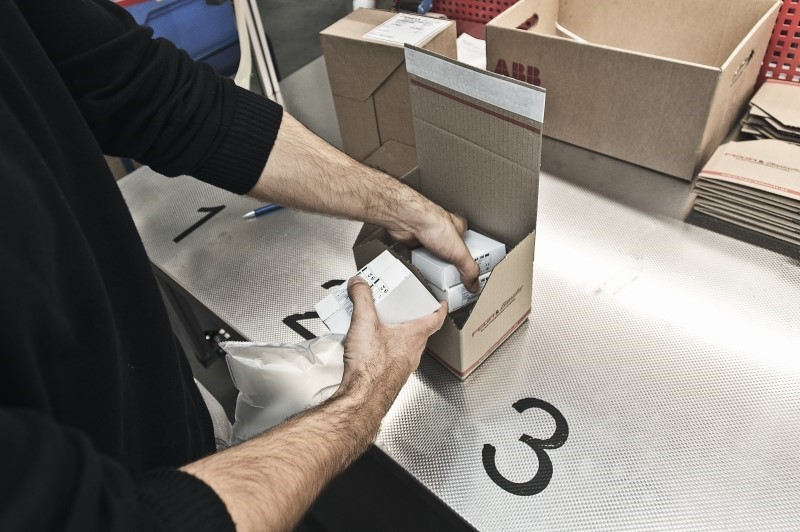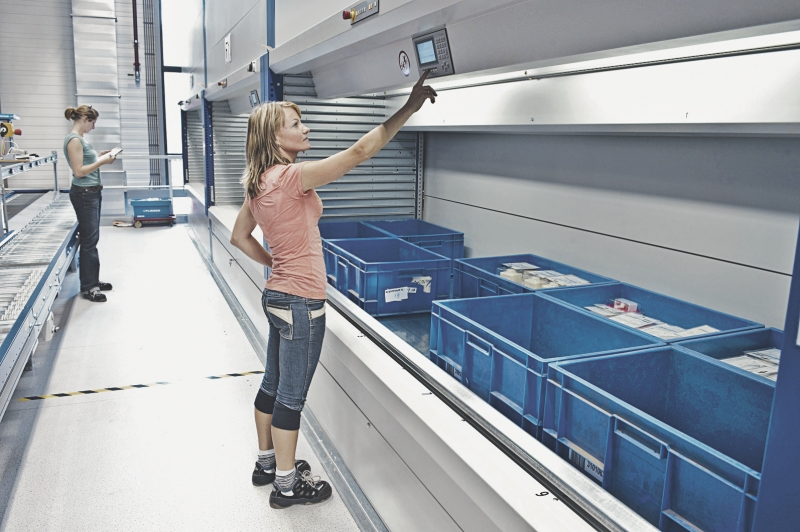 Picking errors are annoying. They delay processes and cost logistics firms enormous amounts of money every year. According to studies, distribution centers lose more than £260,000 a year on average as a result of picking errors. For this reason alone, precise order picking is critical to the success or failure of distribution companies, which is why the work processes must run as smoothly as possible.
Picking errors are annoying. They delay processes and cost logistics firms enormous amounts of money every year. According to studies, distribution centers lose more than £260,000 a year on average as a result of picking errors. For this reason alone, precise order picking is critical to the success or failure of distribution companies, which is why the work processes must run as smoothly as possible.
Accordingly, a zero-error approach to order picking is at the top of the list of priorities among many logistics specialists. Yet how can this be achieved? The use of modern technology is unavoidable for improving performance in distribution centers. Besides choosing and installing suitable technical systems, however, the key to the success of any such approach lies in ensuring that it is put into practice properly by the employees. The technology must be capable of being operated simply and intuitively by the warehouse staff in order for it to work. This is the only way to bring about the necessary acceptance among the workforce. And this is essential if the technology is to be implemented successfully and the costs caused by picking errors are to be reduced on a lasting basis.
How much does inaccurate order picking cost?
Every logistics specialist knows that picking errors cost them money. Nonetheless, by no means all companies are aware of the actual costs involved. Perhaps this explains the lack of understanding among many logistics managers when it comes to investing in modern storage systems. So how much exactly do picking errors cost? According to the findings of the study, one single picking error costs around £15 on average.
This may appear to be a small amount at first glance. However, let’s assume that 60 orders per hour are processed on one line in a distribution center, with each order comprising three parts. These 180 parts per hour, multiplied by the eight hours in a shift, add up to a total of 1,440 parts per day that are susceptible to picking errors. Even if we assume a precision rate of 99 percent, this still results in 14.4 errors per day. If each picking error costs £15, this amounts to a preventable cost of £215. Over the course of a year (300 working days), this adds up to the not insignificant sum of £64.284 with a precision rate of 99 percent. And that’s just one picking station. In large distribution centers, however, the number of goods being handled is on a completely different scale and costs running into hundreds of thousands of euros can soon mount up. These costs could have been avoided with higher accuracy. When viewed in this way, investing in more modern storage units quickly makes sense.
 Fewer errors with automated systems
Fewer errors with automated systems
Besides the automated retrieval of items, additional features on the units are the main reason for the improved precision of the order picking process. Pick-by-light Systems in particular make the warehouse workers’ job easier and ensure faster and more accurate order picking by using a light signal to point out which items to pick. A system of this kind assists the picker by:
- Pointing out the item in the storage container
- Stating the number of items that need to be picked
- Placing the item in the right order bin
- Confirming the correct completion of the order
Errors can occur during any of these four order picking stages and they can be effectively prevented with the digital assistants. In most cases, the necessary LED or laser pointers can be optionally integrated into the units in line with a customer’s individual requirements.
Compared to error-prone manual order picking from conventional shelf storage systems, these assistants increase picking accuracy to a level of 99.9 percent and higher when used with automated retrieval solutions. By using a modern software control system and additional identification methods such as RFID or barcode scanners, the units’ precision can be increased to almost one hundred percent.
When applied to our example, this virtually zero-error picking method results in potential annual savings of almost £62,000. When you also include the savings produced by relocating pickers (fewer pickers required) and the efficiency improvements resulting from the shorter processing times, purchasing such a system pays off for the distribution center within a relatively short space of time.


